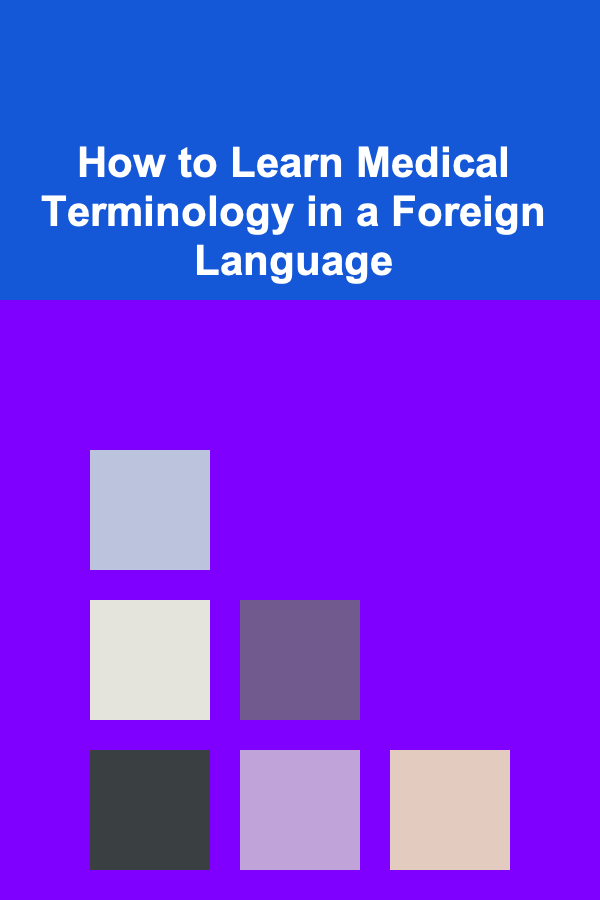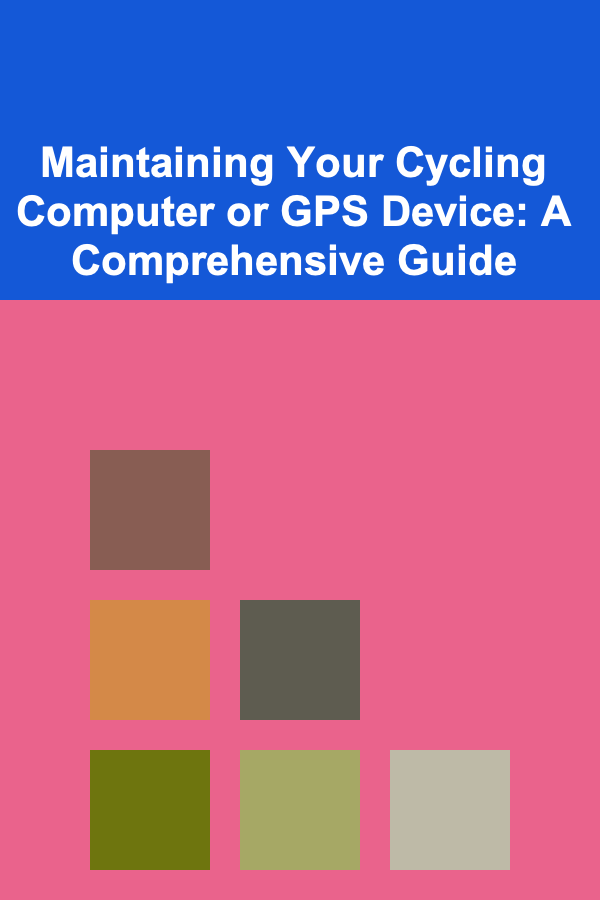
How to Learn Medical Terminology in a Foreign Language
ebook include PDF & Audio bundle (Micro Guide)
$12.99$8.99
Limited Time Offer! Order within the next:

Learning medical terminology is challenging enough in one's native language, but mastering it in a foreign language presents an entirely different set of hurdles. The intricacies of medical vocabulary, coupled with the nuances of a new language, require a strategic and dedicated approach. This article provides a comprehensive guide to effectively learning medical terminology in a foreign language, covering foundational principles, effective learning strategies, essential resources, common pitfalls to avoid, and long-term retention techniques.
I. Understanding the Foundational Principles of Medical Terminology
Before diving into the foreign language aspect, it's crucial to understand the basic building blocks of medical terminology itself. Most medical terms are constructed from prefixes, suffixes, and root words, often derived from Latin and Greek.
A. Anatomy of a Medical Term
A typical medical term consists of:
- Prefix: Usually indicates location, time, number, or status.
- Root: The core meaning of the term, typically referring to a body part or system.
- Suffix: Often indicates a procedure, condition, disease, or part of speech.
Understanding how these elements combine allows you to deconstruct complex terms and deduce their meaning. For instance, consider the term "hypoglycemia":
- hypo- (prefix): below, deficient
- glyc- (root): sugar, glucose
- -emia (suffix): condition of the blood
Therefore, "hypoglycemia" means a condition of low blood sugar.
B. Common Prefixes, Suffixes, and Root Words
Familiarize yourself with the most commonly used prefixes, suffixes, and root words. Create flashcards, use mnemonic devices, or utilize online resources to memorize these fundamental components. Here are some examples:
Common Prefixes:
- a-/an- (without, absence of): apnea (cessation of breathing)
- hyper- (excessive, above normal): hypertension (high blood pressure)
- hypo- (deficient, below normal): hypothermia (low body temperature)
- intra- (within): intravenous (within a vein)
- inter- (between): intercostal (between the ribs)
Common Suffixes:
- -itis (inflammation): appendicitis (inflammation of the appendix)
- -algia (pain): neuralgia (nerve pain)
- -ectomy (surgical removal): appendectomy (surgical removal of the appendix)
- -ology (study of): cardiology (study of the heart)
- -pathy (disease): neuropathy (disease of the nerves)
Common Root Words:
- cardi- (heart): cardiomyopathy (disease of the heart muscle)
- gastr- (stomach): gastritis (inflammation of the stomach)
- neur- (nerve): neurology (study of the nervous system)
- pulmon- (lung): pulmonary (relating to the lungs)
- ren- (kidney): renal (relating to the kidneys)
C. Understanding Exceptions and Variations
While understanding the building blocks is essential, it's important to acknowledge that exceptions exist. Some medical terms may not perfectly adhere to the prefix-root-suffix structure, or they might have variations in spelling and usage. Pay close attention to these irregularities and be prepared to memorize them.
II. Developing Effective Learning Strategies for a Foreign Language
Learning medical terminology in a foreign language necessitates a multifaceted approach that combines language acquisition techniques with specialized medical vocabulary study.
A. Prioritize Language Proficiency
A solid foundation in the target language is paramount. Before focusing solely on medical terms, ensure you have a strong grasp of basic grammar, sentence structure, and common vocabulary. This will enable you to understand the context in which medical terms are used and facilitate comprehension.
Strategies for Improving Language Proficiency:
- Immersive Learning: Surround yourself with the language through movies, music, podcasts, and books.
- Language Courses: Enroll in formal language classes or online courses to gain a structured understanding of grammar and vocabulary.
- Language Exchange: Partner with a native speaker for language exchange. This provides opportunities for real-world conversation and feedback.
- Reading and Writing: Practice reading articles and writing short texts in the target language to reinforce grammar and vocabulary.
B. Translation and Comparison
Translate medical terms and phrases between your native language and the target language. This helps you understand the nuances of each term and identify similarities and differences. Compare the grammatical structures used in both languages to understand how medical concepts are expressed.
Example:
- English: Myocardial infarction (heart attack)
- Spanish: Infarto de miocardio (ataque al corazón)
- French: Infarctus du myocarde (crise cardiaque)
By comparing these translations, you can see how different languages express the same medical concept, highlighting both similarities (e.g., "myocardio" and "myocarde") and differences (e.g., direct translation vs. using a phrase like "heart attack").
C. Contextual Learning
Don't learn medical terms in isolation. Always learn them within the context of a sentence or a clinical scenario. This helps you understand how the term is used in practice and improves retention. Read medical articles, case studies, and textbooks in the target language to see how medical terms are applied in real-world situations.
Example:
Instead of just learning "trombosis" (Spanish for thrombosis), learn it in a sentence like: "El paciente fue diagnosticado con una trombosis venosa profunda en la pierna izquierda." (The patient was diagnosed with a deep vein thrombosis in the left leg.)
D. Active Recall and Spaced Repetition
Use active recall techniques, such as flashcards and self-testing, to reinforce your knowledge. Spaced repetition, where you review material at increasing intervals, is particularly effective for long-term retention. Several apps and websites, such as Anki, are designed to facilitate spaced repetition.
E. Gamification
Make learning fun and engaging by incorporating gamified elements. Use online quizzes, crosswords, and other interactive games to test your knowledge and track your progress. This can help to maintain motivation and improve learning outcomes.
F. Visual Aids and Mnemonics
Use visual aids, such as diagrams, illustrations, and videos, to help you visualize medical concepts and terms. Create mnemonic devices to help you remember difficult terms. For example, you could use a rhyme or an acronym to associate a term with its definition.
III. Essential Resources for Learning Medical Terminology in a Foreign Language
A variety of resources can aid in the process of learning medical terminology in a foreign language.
A. Specialized Dictionaries and Glossaries
Invest in specialized medical dictionaries and glossaries in the target language. These resources provide accurate translations and definitions of medical terms, as well as information on pronunciation and usage. Look for dictionaries that include example sentences and illustrations.
B. Online Medical Resources
Utilize online medical resources, such as websites, databases, and online courses, that are available in the target language. These resources can provide access to a wealth of information on medical terminology, anatomy, physiology, and pathology.
Examples:
- MedlinePlus (National Library of Medicine): Often available in multiple languages.
- Wikipedia: While not always authoritative, the Wikipedia articles on medical topics can often be found in numerous languages, providing a starting point for translation and understanding.
- Specialized Medical Websites: Search for medical websites and portals specific to the target language, often maintained by medical institutions or professional organizations.
C. Textbooks and Educational Materials
Obtain medical textbooks and educational materials in the target language. These resources provide a comprehensive overview of medical concepts and terminology, as well as opportunities for self-testing and practice.
D. Language Learning Apps and Software
Utilize language learning apps and software, such as Duolingo, Memrise, and Rosetta Stone, to improve your language skills and learn medical vocabulary. These platforms often offer specialized courses in medical terminology.
E. Medical Professionals and Native Speakers
Seek out opportunities to interact with medical professionals and native speakers in the target language. This can provide valuable insights into the nuances of medical terminology and help you improve your pronunciation and fluency. Attend medical conferences, seminars, and workshops in the target language.
F. Translation Tools
While not a replacement for genuine understanding, translation tools like Google Translate or DeepL can be helpful for quick lookups or to get a general sense of a term. However, always double-check the accuracy, especially for critical medical information. Machine translation can sometimes produce errors or lack the nuance needed for precise medical communication.
IV. Common Pitfalls to Avoid
Certain pitfalls can hinder your progress in learning medical terminology in a foreign language. Being aware of these common challenges can help you avoid them and optimize your learning process.
A. Relying Too Heavily on Translation
While translation can be a useful tool, relying too heavily on it can impede your ability to think and communicate directly in the target language. Strive to understand medical terms in the target language without constantly translating them back to your native language.
B. Neglecting Pronunciation
Correct pronunciation is essential for effective communication in the medical field. Pay attention to the pronunciation of medical terms in the target language and practice speaking them aloud. Use online resources or language tutors to improve your pronunciation.
C. Ignoring Cultural Differences
Medical terminology and practices can vary across cultures. Be aware of cultural differences in medical terminology, communication styles, and treatment approaches. For example, certain diagnostic procedures might be more common in one country than another, leading to a higher frequency of related terms. Similarly, patient communication styles can vary considerably, impacting how medical information is conveyed.
D. Lack of Consistency
Consistency is key to successful language learning. Dedicate regular time to studying medical terminology in the target language and stick to a consistent learning schedule. Avoid cramming or sporadic study sessions, as this can hinder long-term retention.
E. Fear of Making Mistakes
Don't be afraid to make mistakes. Mistakes are a natural part of the learning process. Embrace them as opportunities for growth and improvement. Practice speaking and writing in the target language, even if you make mistakes. Seek feedback from native speakers and medical professionals to identify areas for improvement.
F. Focusing Solely on Memorization
While memorization is important, it's not enough to truly understand medical terminology. Focus on understanding the meaning and context of medical terms, as well as their relationships to other medical concepts. This will help you retain information more effectively and apply it in real-world situations.
V. Techniques for Long-Term Retention
Sustaining your knowledge of medical terminology in a foreign language requires ongoing effort and reinforcement. These techniques will help you retain what you've learned over the long term.
A. Regular Review and Practice
Regularly review and practice medical terminology in the target language. Use flashcards, quizzes, and other learning tools to reinforce your knowledge. Engage in activities that require you to use medical terminology in a practical context, such as reading medical articles, watching medical videos, or participating in medical simulations.
B. Immersion and Exposure
Continue to immerse yourself in the target language and expose yourself to medical terminology in various contexts. Read medical journals, attend medical conferences, and interact with medical professionals in the target language. This will help you stay up-to-date with the latest developments in the medical field and reinforce your understanding of medical terminology.
C. Teaching Others
Teaching others is a powerful way to reinforce your own knowledge. Volunteer to tutor other students in medical terminology in the target language, or create educational materials to share with others. This will force you to review and organize your knowledge in a clear and concise manner.
D. Practical Application
The best way to retain medical terminology is to use it in practical settings. If possible, seek opportunities to volunteer or work in a medical setting where you can use the target language. This will provide you with real-world experience and help you solidify your understanding of medical terminology.
E. Lifelong Learning
Learning medical terminology is a lifelong process. Stay curious and continue to explore new medical concepts and terms in the target language. Attend continuing education courses, read medical journals, and participate in online forums to stay current with the latest developments in the medical field.
F. Using Technology for Maintenance
Leverage technology to maintain your knowledge. Set up vocabulary reminders on your phone, use spaced repetition apps to review terms periodically, and subscribe to medical journals or newsletters in the target language. Technology can help you seamlessly integrate language learning into your daily routine.
VI. Conclusion
Learning medical terminology in a foreign language is a demanding but rewarding endeavor. By understanding the foundational principles of medical terminology, employing effective learning strategies, utilizing essential resources, avoiding common pitfalls, and implementing long-term retention techniques, you can achieve fluency in medical terminology in your chosen foreign language. This skill will not only enhance your professional capabilities but also enable you to communicate effectively with patients and colleagues from diverse cultural backgrounds, contributing to improved healthcare outcomes and a more inclusive global medical community. Remember that persistence, dedication, and a passion for learning are essential for success in this challenging but ultimately fulfilling journey.

How to Decorate with Plants Without Breaking the Bank
Read More
How to Explore Concentrated Solar Power with Thermal Storage
Read More
How to Pet-Proof Your Home for Safety
Read More
How to Use a Calendar to Plan Your Travel Dates Effectively
Read More
The Web Developer's Playbook: Essential Tools and Techniques for Success
Read More
Maintaining Your Cycling Computer or GPS Device: A Comprehensive Guide
Read MoreOther Products

How to Decorate with Plants Without Breaking the Bank
Read More
How to Explore Concentrated Solar Power with Thermal Storage
Read More
How to Pet-Proof Your Home for Safety
Read More
How to Use a Calendar to Plan Your Travel Dates Effectively
Read More
The Web Developer's Playbook: Essential Tools and Techniques for Success
Read More